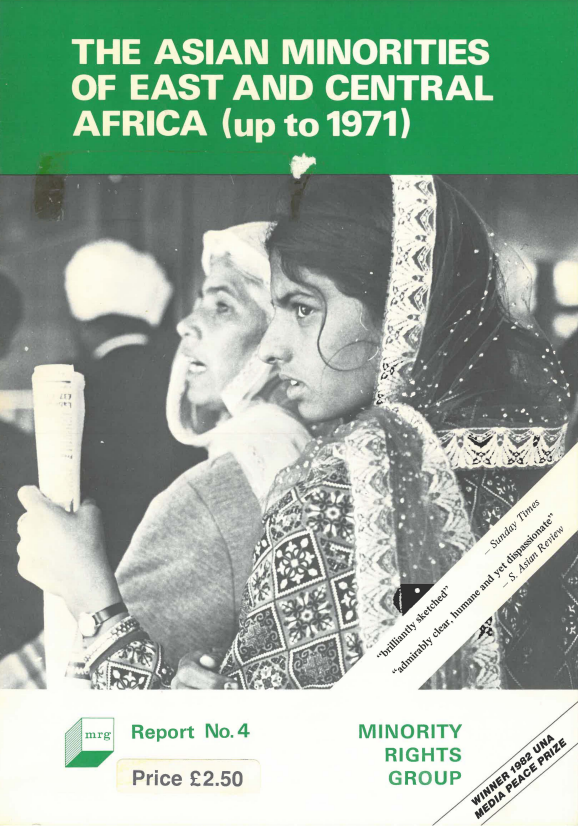
The Asian minorities of East and Central Africa (up to 1971)
One of the most striking problems following in the wake of decolonization in East and Central Africa has been the situation and fate of its minorities. Of these minorities, Asians, for reasons of colour and economic position, are the most clearly visible.
The problem of Asian and other minorities did not, of course, arise only after independence. Most European colonies were plural societies, composed of various tribes and races, and the colonial period was by no means free from rivalries and tensions between these groups. European overrule, however, tended to contain these tensions within tolerable limits. This is not to say that conditions were ideal, and certainly, the European colonial authority was seldom a passive and impartial umpire, particularly where immigrant minorities were involved. These were usually more favoured than the indigenous people, though not all immigrant groups were equally favoured.The coming of independence changed the situation of minorities in significant ways. There is always a struggle for control of the new state. The forces involved draw their support from tribal or regional bases and the goal for which they contend is the establishment of a state with highly centralized powers. There is little of the ‘federal’ sharing of power. Though alliances may be struck between groups to participate in the government, there is a strong flavour of winner-takes-all about the spoils system that characterizes these new states. To be a politically weak minority is therefore an unfortunate circumstance.In many respects, the consequences are similar whether the minority is indigenous or immigrant. But there are also several important distinctions. First, an immigrant minority is regarded as alien – a view which is reinforced after independence when it is seen that large numbers of them are not and do not become citizens of the new state. Second, they tend to be more prosperous and privileged than the rest. These two factors often combine to mark them out for hostility and resentment. Indeed, many of the indigenous people wish to be rid of them altogether.
Unlike even small indigenous minorities, they have little political power. On the other hand, they have greater support from the outside. Their countries of origin may take a special interest in their welfare, and the former colonial power may be ascribed certain residual obligations in regard to them. Instances of racial discrimination attract more world attention than tribal forms, and to some extent, the problems of immigrant minorities tend to get ‘internationalized’.Immigrant minorities are assumed to have the option of emigration and so their future is not regarded as irrevocably tied to the host country, as indigenous minorities might be, though with the latter, examples are not lacking emigration, if only across the border. Hence the refugee problem in Africa.
Nowhere yet in independent Africa has there been enough time to make it possible to suggest any ultimate solution to the problem of immigrant minorities. But in recent years, certain trends have become apparent which have fairly clear implications for the future. This paper seeks to examine the situation of the Asian communities in East and Central Africa, which cover the countries of Kenya, Uganda, Tanzania, Zambia and Malawi.—Please note that the terminology in the fields of minority rights and indigenous peoples’ rights has changed over time. MRG strives to reflect these changes as well as respect the right to self-identification on the part of minorities and indigenous peoples. At the same time, after over 50 years’ work, we know that our archive is of considerable interest to activists and researchers. Therefore, we make available as much of our back catalogue as possible, while being aware that the language used may not reflect current thinking on these issues.
Please note that the terminology in the fields of minority rights and indigenous peoples’ rights has changed over time. MRG strives to reflect these changes as well as respect the right to self-identification on the part of minorities and indigenous peoples. At the same time, after over 50 years’ work, we know that our archive is of considerable interest to activists and researchers. Therefore, we make available as much of our back catalogue as possible, while being aware that the language used may not reflect current thinking on these issues.